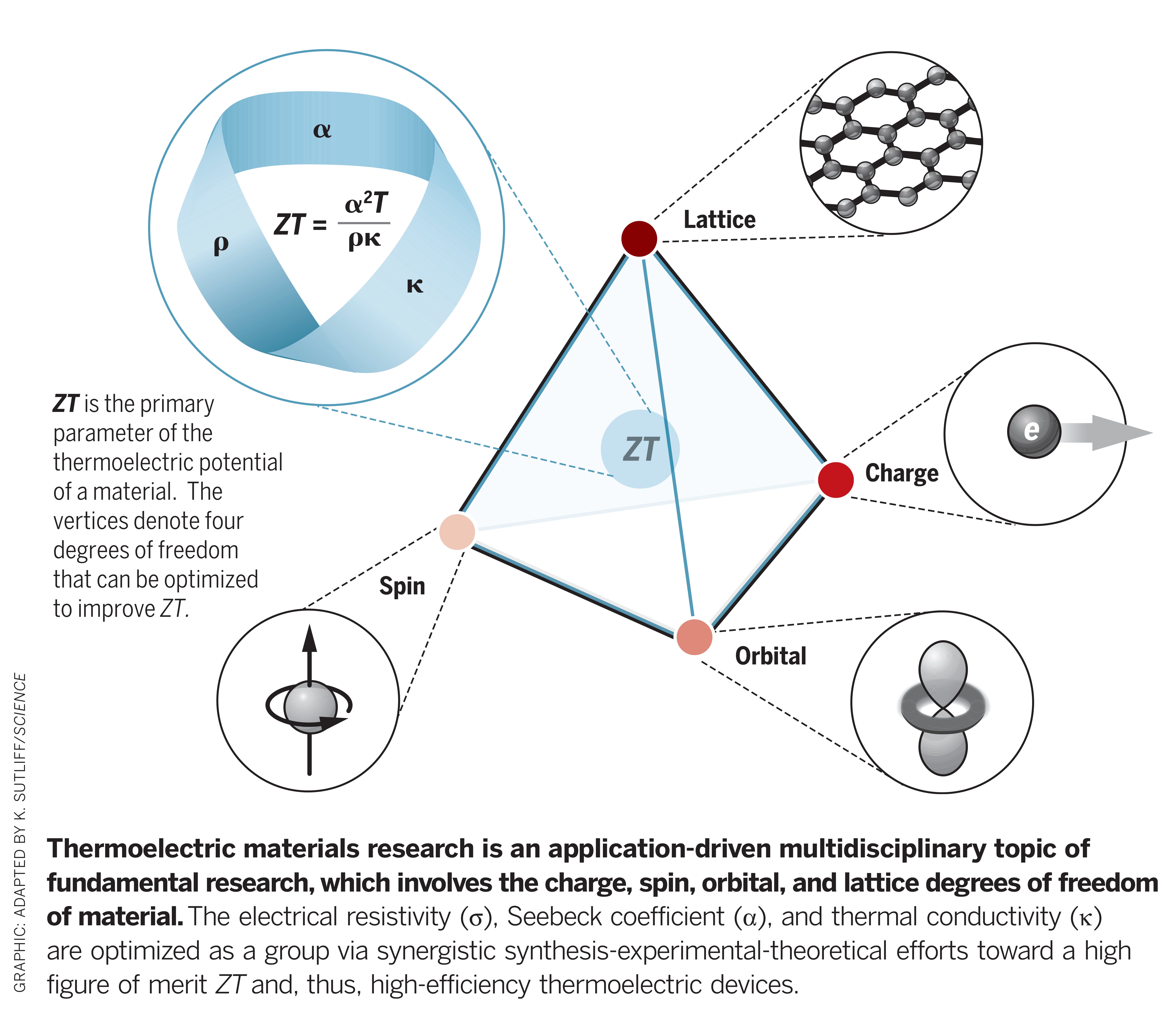
Thermo-electric effect
Thermo-electrische
elementen kunnen voor drie doelen worden gebruikt.
•
Als koelelement. Ze worden gebruikt in draagbare koelboxen werkend op 12 Volt.
•
Als verwarmingselement. Ze werken dan als warmtepomp zonder bewegende delen.
•
Als stroombron. Door een temperatuurverschil zal een Peltier-element
stroom opwekken. Dit kan gebruikt worden om restwarmte te benutten,
zij het met een maximale efficiency van (Tmax-Tmin)/Tmin. Waarbij T
de absolute temperatuur is (Celsius + 273.15).
Dit heet het Seebeck-effect en is overigens al in 1794 door Alessandro Volta
ontdekt.
De verwachting is dat thermo-electrische elementen nog sterk
verbeterd kunnen worden zonder gebruik van dure of giftige verbindingen.
Daar wordt onderzoek naar gedaan, met name in Duitsland en China, maar
niet in Nederland - hoezo Nederland innovatieland?
 Review
Review
Advances in thermoelectric materials research: Looking back and moving forward by Jian He and Terry M. Tritt
Thermoelectric materials convert heat into electricity and can provide
solid-state cooling for spot-sized refrigeration. One important barrier
for adopting these materials beyond niche applications is their low
efficiency. He and Tritt review the mechanisms and strategies for
improving thermoelectric efficiency. They discuss how to report material
performance and highlight the most promising materials. With new
materials and strategies for performance enhancement, thermoelectrics are
poised to alter the renewable energy landscape.
http://science.sciencemag.org/content/357/6358/eaak9997
PDF download for AAAS members only.
Een laatste ontwikkeling is
plastic kristal
met een
colossal barocaloric effect.
Het wordt in een recent artikel in het blad Nature gepresenteerd als
koelmiddel waarbij plastic wordt samengedrukt in plaats van een gas.
Maar het zou ook als basis voor een geavanceerde warmtepomp kunnen dienen.
Zie
https://www.nature.com/articles/d41586-019-00974-5


© Harm J. Schoonhoven Versie 11 juni 2019. Distributed under
MIT licence
.


 Review
Review

